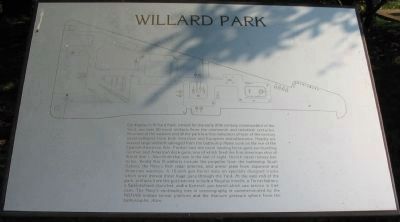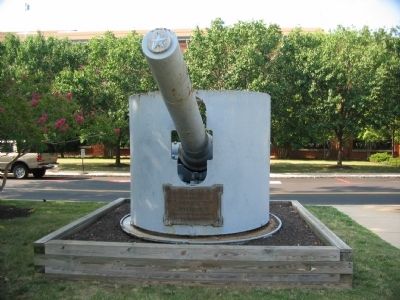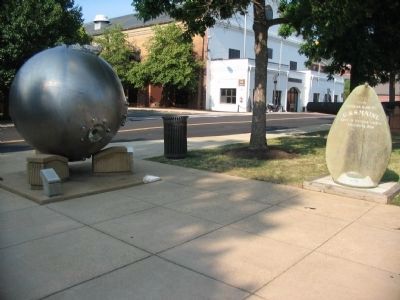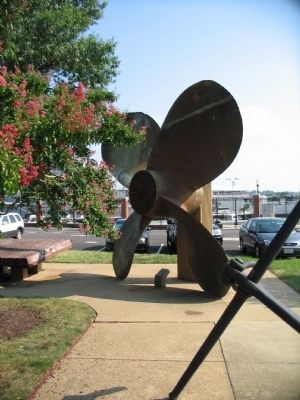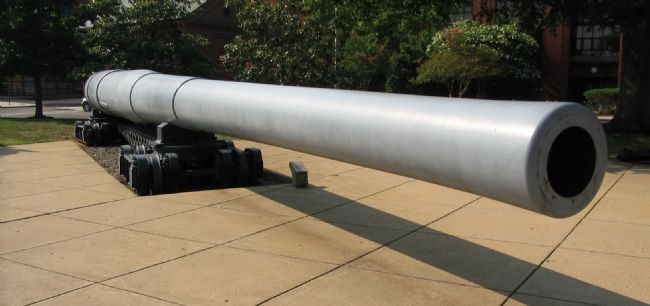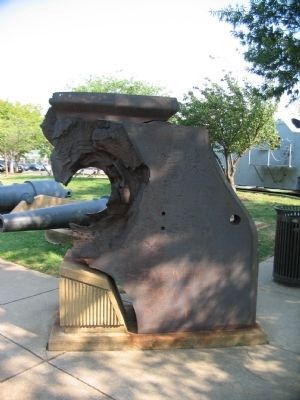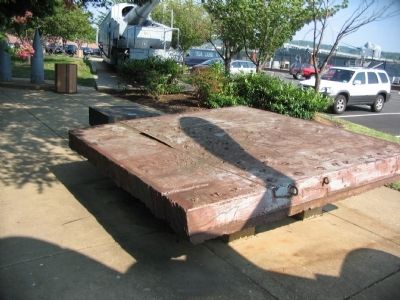Navy Yard in Southeast Washington in Washington, District of Columbia — The American Northeast (Mid-Atlantic)
Willard Park
Inscription.
On display in Willard Park, named for the early 20th century commandant of the Yard, are over 60 naval artifacts from the nineteenth and twentieth centuries. Mounted at the western end of the park is a fine collection of turn-of-the-century naval ordnance from both American and European manufacturers. Nearby are several large artifacts salvaged from the battleship Maine sunk on the eve of the Spanish-American War. Farther east are naval landing force guns surrounding German and American deck guns, one of which fired the first American shot of World War I. Also from that war is the last of eight 14-inch naval railway batteries. World War II artifacts include the propeller from the battleship South Dakota, the Navy's first radar antenna, and armor plate from Japanese and American warships. A 16-inch gun barrel rests on specially designed trucks which once moved these huge guns through the Yard. At the east end of the park, artifacts from the post war era include a Regulus missile, a Terrier battery, a Sparrowhawk launcher, and a five-inch gun barrel which saw service in Vietnam. The Navy's continuing role in oceanography is commemorated by the NOMAD remote sensor platform and the titanium pressure sphere from the bathyscaphe, Alvin.
Erected by U.S. Navy.
Topics. This historical marker is listed in this topic list: Military.
Location. 38° 52.363′ N, 76° 59.749′ W. Marker is in Southeast Washington in Washington, District of Columbia. It is in Navy Yard. Marker is on Sicard Street Southeast west of Paulding Street Southeast, on the left when traveling west. Marker is inside the Washington Navy Yard, at the center of Willard Park. Touch for map. Marker is at or near this postal address: 736 Sicard Street Southeast, Washington Navy Yard DC 20374, United States of America. Touch for directions.
Other nearby markers. At least 8 other markers are within walking distance of this marker. Navy Gun Car (within shouting distance of this marker); Washington Navy Yard Chapel (within shouting distance of this marker); National Museum of the U.S. Navy (within shouting distance of this marker); a different marker also named Willard Park (within shouting distance of this marker); Welcome Aboard the Display Ship BARRY (DD-993) (about 300 feet away, measured in a direct line); Frank W. Crilley Building (about 400 feet away); Site of U. S. Experimental Model Basin 1898 - 1955 (about 400 feet away); Marine Railway - Experimental Model Basin (about 400 feet away). Touch for a list and map of all markers in Southeast Washington.
Also see . . . VAdm. Arthur L. Willard. (Submitted on February 9, 2012, by Richard E. Miller of Oxon Hill, Maryland.)
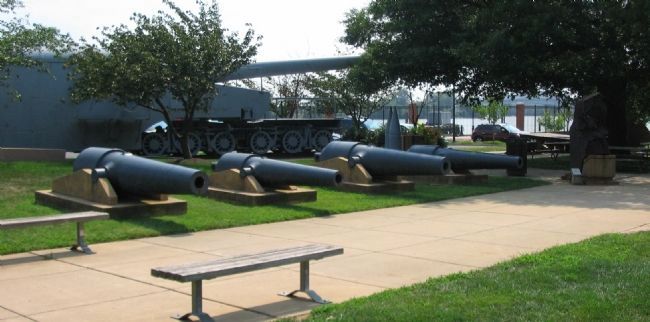
Photographed By Craig Swain, August 1, 2008
8. Guns from the CSS Atlanta
Among the trophies in Willard Park are four guns from the ironclad CSS Atlanta. The Atlanta was captured off the coast of Georgia near Savannah in 1863 following a duel with two Federal ironclads. Pressed into Federal service, after the war she was scrapped. These guns are early production Brooke Rifles cast at Tredegar Iron Works, Richmond, Virginia. Their single bands give a very similar appearance to Federal Parrott Rifles.
Credits. This page was last revised on January 30, 2023. It was originally submitted on August 18, 2008, by Craig Swain of Leesburg, Virginia. This page has been viewed 2,820 times since then and 58 times this year. Photos: 1, 2, 3, 4, 5, 6, 7, 8. submitted on August 18, 2008, by Craig Swain of Leesburg, Virginia.
